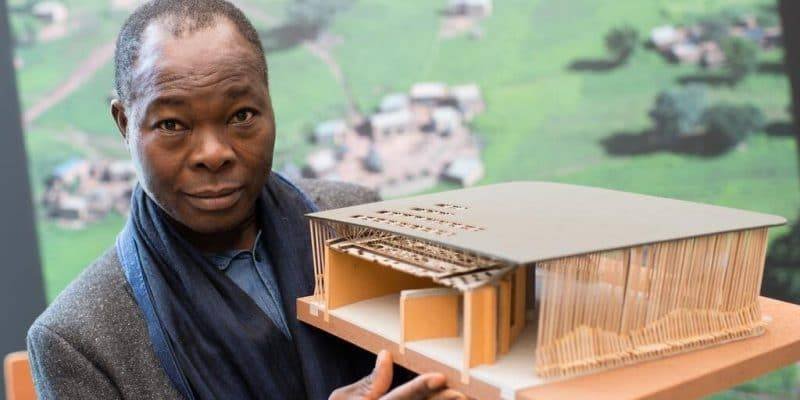When it comes to architecture, the Pritzker Architecture Prize is like the Holy Grail. It’s the highest honor one can receive in the field and is often referred to as the ‘Nobel of architecture’. So, when Francis Kéré became the first African ever to win this prestigious award, the whole world took notice. Kéré’s groundbreaking achievement not only celebrates his remarkable talent but also represents a significant milestone for African architects worldwide. His win serves as a powerful symbol of the growing recognition and influence of African architects on the global stage.

Francis Kéré is a visionary architect who hailed from the small village of Gando in Burkina Faso The Pritzker recognition highlights Kéré’s exceptional talent, innovative approach, and profound impact on the architectural landscape.
Born and raised in a community deeply connected to its traditions, Kéré has emerged as a beacon of inspiration, blending local wisdom with global design principles. Through his commitment to sustainability, community engagement, and pushing boundaries, Kéré’s architectural philosophy transcends borders, reshaping the perception of African architecture on a global scale. In this article, we delve into the life, works, and enduring legacy of Francis Kéré, celebrating his historic achievement and exploring the profound implications for the field of architecture.

To understand the extraordinary path that led Francis Kéré to architectural greatness, we must start from his humble beginnings in Gando, a small village in Burkina Faso. Growing up in a community where resources were scarce, Kéré experienced firsthand the challenges of living in a harsh environment. However, his passion for building structures and improving his community’s living conditions emerged at an early age.
Even without formal architectural training, Kéré’s innate talent shone through. He learned from the traditional building methods and techniques used by his community, combining them with practical innovations and a desire to create functional and beautiful spaces. His passion for architecture eventually led him to study at the Technical University in Berlin, where he honed his skills and expanded his knowledge.
What sets Francis Kéré apart from many architects is his never-back-down attittude toward community engagement and participation. He firmly believes that architecture should be a collaborative process that involves the people who will use and benefit from the spaces being created. Kéré actively involves local communities in the design and construction, ensuring that their needs and aspirations are at the forefront of his projects.

In addition, sustainability is a key pillar of Kéré’s architectural philosophy. He incorporates local materials and traditional building techniques to create structures that not only harmonize with their surroundings but also minimize the environmental impact. From utilizing natural ventilation systems to maximizing natural light, Kéré’s designs prioritize energy efficiency and ecological responsibility.
Kéré strikes an elegant balance between tradition and innovation in his work. He embraces the rich cultural heritage of Burkina Faso while infusing it with contemporary design principles. By seamlessly blending the past and the present, Kéré creates buildings that not only serve their purpose but also pay homage to the cultural identity of the communities they belong to.
Francis Kéré’s architectural prowess is evident in his impressive portfolio, which includes several notable projects that have garnered international acclaim. One of his most significant achievements is the design of the Burkina Faso National Assembly, where he seamlessly blended modern architectural elements with traditional Burkinabe construction techniques to create a landmark that symbolizes democracy and progress.
Another noteworthy project is the Serpentine Pavilion in London, a temporary structure that showcases Kéré’s ability to create ethereal spaces that connect people with nature. The pavilion’s intricate wooden roof, inspired by a tree canopy, provides shelter from the elements while inviting visitors to engage with the surrounding landscape.

In his design for the Léo Surgical Clinic in Burkina Faso, Kéré displayed his commitment to addressing pressing social issues through architecture. This groundbreaking medical facility demonstrates his ability to create functional spaces that prioritize the well-being of patients and healthcare providers alike.
Francis Kéré’s historic and unique approach to architecture, rooted in community engagement, sustainability, and a harmonious blend of tradition and innovation, will continue to be a major hit in the architectural world. We look forward to witnessing the continued impact of his visionary designs for years to come.

